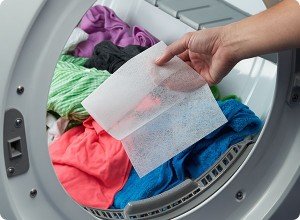Supplementation with activated zeolite suspension improves post-workout recovery and perceived pain levels
3 min read
Individuals who exercise regularly are familiar with the need for post-workout time to recover from the fatigue of effort as well as the pain or discomfort associated with a rigorous workout. During this time of recovery, the body is actively washing out the build-up of waste products from cellular respiration as well as repairing microscopic muscle tears caused by the exertion. The wise athlete knows that “tomorrow’s workout is only as good as today’s recovery,” but time spent recovering is time that is not spent training. Thus, athletes looking for an edge in extremely competitive sports often go without adequate post-workout recovery time (PWOR).
Lactic acid is a common metabolic waste product generated during intense muscle activity and frequently the cause of the discomfort experienced after workout. (An acid is defined as a compound that donates a proton (H+, or hydrogen ion) to a system.) Activated zeolite suspension (AZS) is a relatively new class of nutritional supplement designed to aid the body in excretion of toxins, particularly heavy metal ions with a positive charge (cations). Through this mechanism, AZS also helps balance the pH of body fluids.
The other major cause of post-workout muscle pain, muscle fiber damage, is repaired over time through complex cellular mechanisms. Some of the repair machinery used by the body for this function use cations like manganese and zinc to perform their function. This activity can be inhibited by small, highly charged heavy metal cations like mercury, lead, bismuth and antimony. A small slow-down in this process, perhaps caused by one or more of these toxic heavy metals, could significantly lengthen recovery time.
The purpose of this study was to determine if supplementation with AZS could reduce the time needed to recover after a workout by eliminating these contributory ions. To this end, questionnaires were sent to 500 volunteer athletes, including 250 individuals who identified themselves as “competitive” and 250 who were “recreational” participants. Each athlete received a 30-day supply of Natural Cellular Defense and a 30-day journal. Volunteers were asked to evaluate the effect of the supplement on athletic performance, PWOR time and perceived pain daily. After 30 days, the forms and journals were returned and evaluated.
The 357 respondents were grouped by sport (power-lifting/bodybuilding, running and bicycling) and then by competition level (competitive vs. recreational). Through the questionnaire, we sought to determine improvement in perceived pain and reduction in PWOR time, rated as: no change, minor reduction, moderate reduction, and significant reduction. We also sought to identify any improvement in athletic performance, rated as: no improvement, minor improvement, moderate improvement, and significant improvement. After cataloging the responses of each participant, data were analyzed and evaluated.
Participants in all sports at all levels reported improvements in both perceived pain and PWOR time. 82.8% of competitive athletes reported moderate to significant reduction in PWOR time and perceived pain while 47% reported an improvement in athletic performance. 76.5% of all recreational participants reported significant improvement while 85% of recreational bicyclists reported a performance boost. 70% of recreational runners got moderate to significant reduction in PWOR time.
We propose that AZS is directly acting on the muscular microenvironment to reduce the presence of both hydrogen and heavy metal ions that are responsible for the discomfort experienced following a rigorous workout. The pH regulation occurs when AZS sequesters this hydrogen ion and either redistributes it or facilitates excretion via the kidneys. Further, the AZS is also there to scavenge any stray heavy metal ions that might reduce the ability to conduct cellular and muscular repair.
Source: http://www.zeolite-products.com/ktml2/files/uploads/zeolite-mercury.pdf





